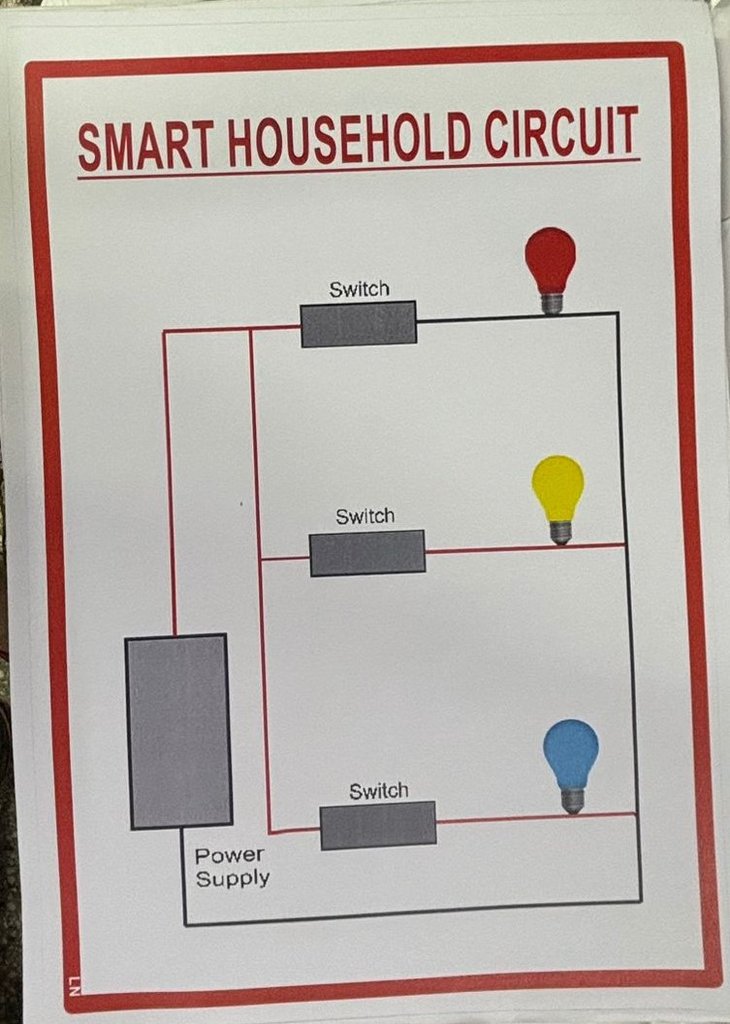



Smart HouseHold Circuit
550 1000
You Save 45% (Inclusive of all taxes)
- Availibility: In Stock
Components Required:
- Light Bulb (e.g., 60W or 100W incandescent bulb)
- Switch (Single-pole switch for on/off control)
- Power Supply (e.g., 230V AC mains or 12V DC battery, depending on the bulb used)
- Wiring (For connecting the components)
- Bulb Holder (To secure the bulb)
- Connecting Wires
- Insulating Tape (For safety)
Qty
Secure Transaction
Your Transaction is Secure
We work hard to Protect your Security and Privacy. Our Payment Security System Encrypts your information during transmission.
Description
Project Description: This project involves constructing a simple electrical circuit with a light bulb and a switch. Students will connect the light bulb to the power supply through the switch, which allows them to control whether the bulb is on or off.
-
Circuit Assembly:
- Step 1: Secure the light bulb in the bulb holder.
- Step 2: Connect one terminal of the bulb holder to one terminal of the switch.
- Step 3: Connect the other terminal of the switch to the positive terminal of the power supply.
- Step 4: Connect the other terminal of the bulb holder to the negative terminal of the power supply.
- Step 5: Ensure all connections are secure and insulated to prevent short circuits or electrical hazards.
-
Operation:
- When the switch is closed, the circuit is complete, and current flows through the light bulb, causing it to light up.
- When the switch is opened, the circuit is broken, and the bulb turns off.
Applications:
- Understanding basic concepts of electrical circuits
- Learning about series circuits and the role of switches
- Practical experience with connecting and controlling electrical components
Additional information
Reviews
Add a Review
Your email address will not be published. Required fields are marked *
Related Products
×
![]()









